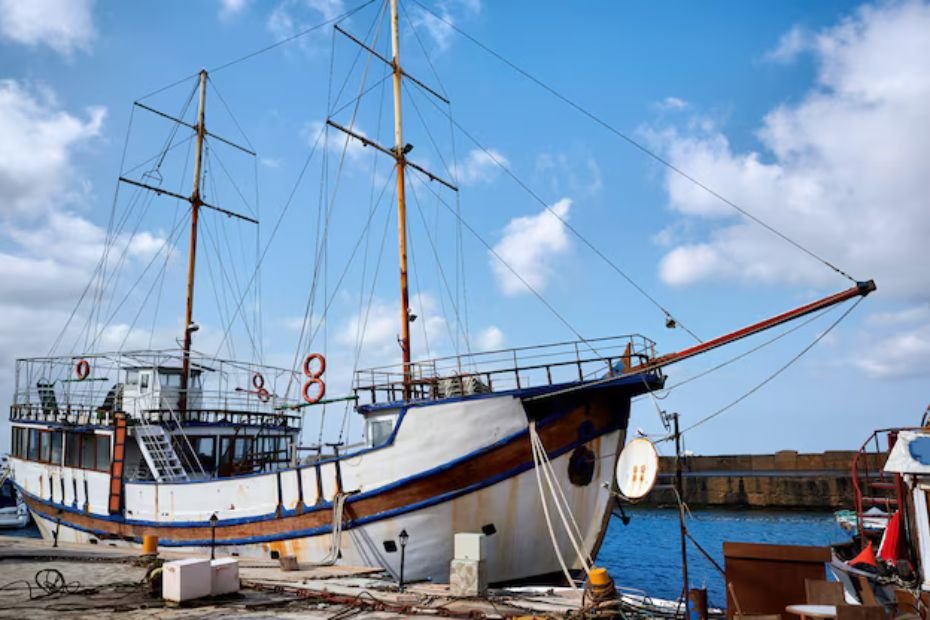Charleston, South Carolina, is a city steeped in history, known for its charming streets, colorful buildings, and rich maritime heritage. Nestled along the Atlantic coast, Charleston has played a crucial role in American maritime history, from its founding in 1670 to its significance during the Civil War. This article delves into the city’s maritime heritage, exploring key historical sites, significant events, and cultural influences that make Charleston a unique destination for history enthusiasts and curious travelers alike.
A Brief History of Charleston’s Maritime Roots
Charleston was established as a port city and quickly became one of the busiest and most important ports in the American colonies. The city’s strategic location made it an ideal hub for trade, especially in rice, indigo, and cotton. Over the years, Charleston has seen countless ships dock at its harbor, each contributing to the city’s rich maritime narrative.
The Importance of the Port
The Port of Charleston has been vital for economic growth and trade throughout its history. In the early years, the city relied heavily on the transatlantic trade of goods, including enslaved individuals, which had a profound impact on its social and economic structure. The port continues to be one of the busiest in the Southeast, handling millions of tons of cargo each year.
Key Historical Sites Reflecting Maritime Heritage
Charleston is home to several historical sites that highlight its maritime past. Visiting these sites provides a deeper understanding of the city’s heritage and the role the sea played in shaping its culture.
1. The Charleston Maritime Center
Located along the waterfront, the Charleston Maritime Center offers visitors a chance to learn about the city’s maritime history through interactive exhibits and displays. The center features artifacts, photographs, and educational programs focusing on Charleston’s shipbuilding, fishing, and naval history.
2. The South Carolina Aquarium
The South Carolina Aquarium showcases the diverse marine life of the region, highlighting the importance of the ocean and its ecosystems. Through engaging exhibits, visitors can learn about local habitats, conservation efforts, and the role the ocean plays in Charleston’s economy and culture.
3. The USS Yorktown
At Patriots Point Naval & Maritime Museum, the USS Yorktown is a must-see. This historic aircraft carrier played a significant role in World War II and the Vietnam War. Visitors can tour the ship, learn about naval aviation history, and explore various military exhibits, including the Medal of Honor Museum.
4. Fort Sumter National Monument
The Fort Sumter National Monument is an essential part of Charleston’s maritime history. This site is famous for being where the first shots of the Civil War were fired in 1861. Today, visitors can take a ferry to the fort, where they can explore the ruins and learn about the significance of the site during the war.
The Influence of Maritime Culture on Charleston
Charleston’s maritime heritage has significantly influenced its culture, cuisine, and community life. The sea has provided a wealth of resources and shaped the city’s identity in numerous ways.
Culinary Traditions
Charleston’s coastal location has given rise to a unique culinary scene. The city is known for its seafood dishes, including shrimp and grits, she-crab soup, and oysters. The influence of Gullah culture, which has deep roots in the region, can also be seen in many local recipes, blending African traditions with Southern cooking.
Maritime Festivals
Charleston hosts several maritime festivals throughout the year that celebrate its seafaring culture. The Charleston Maritime Festival, for instance, features boat races, maritime arts and crafts, and live music, showcasing the city’s vibrant maritime community.
The Role of Gullah Culture
The Gullah people, descendants of enslaved Africans in the Lowcountry, have a rich maritime tradition that contributes to Charleston’s heritage. Their deep knowledge of the sea, fishing techniques, and culinary practices are vital aspects of Charleston’s identity. Visitors can explore this culture through storytelling, food, and art.
Outdoor Activities Highlighting Maritime Heritage
Charleston offers various outdoor activities that allow visitors to experience its maritime heritage firsthand. From boating to fishing, there’s something for everyone.
1. Boating and Sailing
Charleston’s scenic waterways provide excellent opportunities for boating and sailing. Visitors can rent sailboats, join guided tours, or take sailing lessons to enjoy the beauty of the coast. Exploring the harbor offers stunning views of the city skyline and historical sites.
2. Fishing Charters
Fishing is a popular pastime in Charleston. Several local charters offer fishing trips for both beginners and experienced anglers. You can catch a variety of fish, including redfish, trout, and tarpon, while enjoying the beautiful coastal scenery.
3. Kayaking and Paddleboarding
For a more intimate experience with the water, kayaking and paddleboarding are great options. Various companies provide rentals and guided tours through the marshes and estuaries, where you can observe local wildlife and learn about the ecosystem.
Conclusion
Charleston, South Carolina, is a city rich in maritime heritage that invites visitors to explore its fascinating history and culture. From historical sites and museums to vibrant festivals and delicious seafood, the city’s connection to the sea is evident in every corner. Whether you’re wandering through the charming streets or enjoying outdoor adventures on the water, Charleston’s maritime legacy promises a memorable experience that honors its past while celebrating its future.
